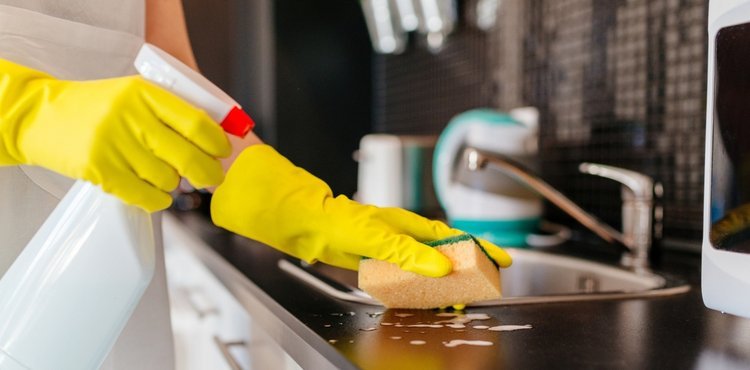Discovering mould on your walls can be disheartening, as it not only affects the aesthetics of your home but also poses potential health risks. Promptly addressing mould growth is crucial to prevent its spread and protect your indoor air quality. In this article, you will be provided with three simple steps to effectively get rid of mould on walls to ensure a clean and healthy living environment.
Know the Safety Precautions and Preparation
Before starting the mould removal process, it is essential to prioritize your safety and properly prepare the area. First you have to wear protective gear, such as gloves, safety goggles, and a face mask to avoid direct contact with mould spores and prevent respiratory issues. Then you can open windows and use fans to improve ventilation in the room. This minimizes the concentration of mould spores in the air. The next step is to clear the affected area by moving furniture, decorations, and other belongings away from the walls. This prevents the spread of mould during the cleaning process.
Perform the Mould Removal and Cleaning

To effectively eliminate mould from your walls, there are several steps to follow. The first step is to create a mould cleaning solution by mixing equal parts of water and either vinegar or bleach. Vinegar is a natural, non-toxic option, while bleach is effective against mould but requires proper ventilation and caution when handling. Second, scrub the walls by dipping a sponge, scrub brush, or cloth into the cleaning solution and gently scrub the mould-infested areas. Pay extra attention to areas with visible mould growth or discoloration. You also have to ensure that you cover the affected wall surface thoroughly. Third, after scrubbing the walls, use a clean cloth or sponge dampened with fresh water to rinse off the cleaning solution. Dry the walls thoroughly using a towel or allow them to air dry. Proper drying is important to prevent mould regrowth.
Perform Regular Prevention and Maintenance
To prevent future mould growth and maintain a mould-free environment, you have to take several preventive measures. First, you can fix moisture issues by identifying and addressing any underlying moisture problems that contribute to mould growth, such as leaks, condensation, or poor ventilation. Repair leaks, improve ventilation, and use dehumidifiers if necessary. Second, you have to monitor humidity levels by keeping the humidity levels in your home below 50%. Use a hygrometer to measure humidity and take steps to reduce it if it is consistently high. Finally, you should do regular cleaning and maintenance by Implementing a regular cleaning routine, especially in areas prone to moisture and mould growth. Wipe down surfaces regularly and promptly address any signs of mould or moisture issues.



